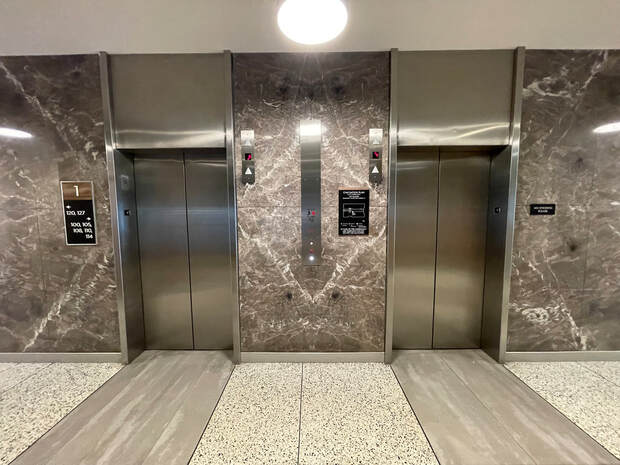|
Imagine you’re fresh out of college at your first job. Your one month in and your employer sends you halfway across the country to attend a conference. You’ll be going to meetings, networking and representing your company and you have no idea what you’re doing. On top of that, as you unpack your suitcase in the hotel room you realize you didn’t pack very well and your shirt is wrinkled. You find an iron in the closet and make an attempt to get the wrinkles out. All this is a bit nerve-wracking, right? I can help with that!
I’m teaching a Business Etiquette course at Fullerton College in the Spring 2024 semester. Every aspect of the scenario I described above, plus more, is covered in the class. When an employer hires a candidate, many times they’re focused on the technical skills needed for the job. Once hired they don’t have the time, resources or the knowledge to train them in soft skills needed. That’s where this course comes in. According to the U.S. Department of Labor employers view soft skills as even more important to work readiness. The objectives of this course are to prepare students for success in the business workplace. They will learn how to prepare a professional resume, prepare for and execute a job interview, and outline a plan to execute a business event to showcase etiquette and protocol skills. Students will also polish their presentation skills and conduct interview prep. Each module of the 16-week course will dive deep into different topics around business etiquette and projecting a professional image in the workplace. Many of the topics we will cover are rooted in the goal of having my students come away with skills they can apply in real-life scenarios. There will be hands-on training and role playing throughout the course. We will cover introductions, handshakes, listening skills and the art of conversation. We will also discuss how to respond to awkward questions as well as those awkward moments we’ve all experienced. We'll even take mini field trips on campus to practice elevator etiquette and the proper door protocol in a business environment. One class will be solely devoted to projecting a professional business image. Employers want staff who will represent them in a positive manner when they are out in the field. This module is designed to do just that! It may be a little unconventional for a college class, but the takeaway for the student’s will be invaluable. We will discuss dressing for success: business attire vs. casual attire. In addition, they will learn basic skills that will help them become a polished representative of their employer. Part of the class will focus on clothing maintenance: how to sew a button, how to iron a shirt and even how to tie a tie. In other classes we will review conducting business with other cultures, netiquette and business travel (which will include how to pack to avoid wrinkled clothing). The final project of the class will be for students to plan and execute a business etiquette meal. Part of this project includes proper dining etiquette that they will need to demonstrate at the meal. All this will require teamwork and collaboration skills that are essential in many jobs. I’m confident that the knowledge the students will learn in this course will set them apart from other job candidates as well as co-workers. The skills they acquire will prepare them from experiencing the situation I described at the beginning of this blog post. Plus, having this class listed on their resume will catch the eye of employers who want these soft skills in their employees. If you or someone you know is looking to up their game in the job market, please share this blog with them. Here is the link to the course: https://bit.ly/3QWDmIm
0 Comments
I just finished watching the Netflix series “Suits” and I loved the scenes in the high-rise buildings. Especially when they were getting off the elevators. It seemed as if someone was always ready to greet the main character, Harvey Specter, as the elevator doors opened. No one was pushing their way on or off the elevator. They were all very civil as they entered and exited the elevator and I bet those high-powered attorneys were just as polite in the elevator. At least while the cameras were rolling. That’s usually not what happens in the real world. Many times, we’re met with a throng of people trying to enter the elevator as we’re trying to exit. Or there’s someone talking loudly next to us on their cellphone. That’s where this blog post comes in. Here are some things to keep in mind the next time you press that elevator button. Entering and Exiting an Elevator When waiting for an elevator, stand a few feet back to allow people on the elevator to exit when it arrives. If you stand too close, there won’t be enough room for them to exit. Instead, stand to the side to allow those on board to exit before you enter the elevator. Traditionally, a gentleman would enter the elevator first to make space for the lady and when they arrived at their floor, the lady would exit the elevator first. When I see someone still practice this tradition it makes my heart happy. With today’s modern manners, many choose not to follow this tradition and instead allow anyone to go first. Be aware of others as they make their way on or off the elevator with you. Allow a person in a wheelchair, someone with a cane or walker, a pregnant woman or someone with a stroller to enter and exit first. Hold the elevator door and say: “After you!” Elevator etiquette in a business situation is slightly different. In a business environment, the person with the higher ranking or a client would be the first to enter and exit the elevator. If there are several people in your party, hold the door for them as they enter and exit. In the Elevator Keep in mind that the idea around etiquette and manners is to be aware of how your actions affect others. In a confined space, such as an elevator, we need to be extra mindful of our behavior. Having a personal conversation in that space can make the people who are overhearing it feel uncomfortable. Here are some things to keep in mind about cellphones in an elevator:
Make space for everyone as they enter the elevator. If it’s crowded, don’t squeeze on. Wait for the next one. As you step into the elevator, push the button for your floor. If you’re in the elevator with others and standing next to the button panel, offer to push their button by asking “What floor?” Many of these tips can also be applied to trains, buses and subways. Whether you’re in a high-rise building or using public transportation, keep these tips in mind as you channel your inner Harvey Specter. Etiquette plays a crucial role in creating a productive and respectful meeting environment. Here are some guidelines to follow for a successful meeting: Meeting RSVPS When asked to RSVP to a meeting, do it promptly. It will allow the organizer to know who will be attending. Plus, it will give them an opportunity to reschedule, if not enough people can attend. Punctuality Arrive on time. Being late disrupts the flow of the meeting and shows a lack of respect for others' time. How long should you wait for someone who is late for a meeting? It can vary based on the type of meeting, the person and your schedule. If it’s 10 minutes into the meeting time and they haven’t arrived, I suggest a call or text to them to confirm that the meeting is still on. For a business meeting, I would probably request to reschedule if they haven’t arrived after 15-20 minutes. I suggest confirming meetings the day before as a reminder for all involved. Late for a meeting If you’re running late for a meeting, let the person who you are scheduled to meet with know as soon as possible. If you will be more than 15 minutes late, ask them if they would prefer to reschedule the meeting. Preparation for a meeting Review the agenda and any relevant materials beforehand so you can actively contribute to the discussion. If it’s appropriate, take notes during the meeting to capture key points, action items, and decisions. Bring something to take notes with. This can be an iPad, laptop or good old paper and pen. To give your notepad a polished and professional look carry it in a portfolio folder. Avoid taking notes on your phone because this can give the impression that you are scrolling through social media or checking emails. Presenting at a meeting Confirm how much time you will have for your report or presentation and that you are on the meeting agenda. Prepare well in advance, so you’re not scrambling to put it all together last minute. If using electronics for your presentation (e.g., Power Point, videos, etc.), arrive early to the meeting to make sure everything is working properly. I suggest having a backup on a thumb drive or easily accessible in a cloud storage like Dropbox or Google Drive. This is insurance against any issues with the devices in the meeting space. During a meeting Minimize distractions by silencing your phone and keeping it out of sight. If you are expecting an important call that you must absolutely take, let the meeting organizer and attendees know you may need to step out during the meeting to take the call. Stay on topic. Stick to the agenda items and relevant discussions. Avoid going off on tangents that waste time. Be considerate of everyone in the meeting and avoid monopolizing the conversation. Allow everyone to have a chance to speak. Be respectful and professional if you don’t agree with someone. Avoid personal attacks and focus on the issues at hand. Stick to the allotted time for each agenda item. If more time is needed, suggest adding it to a future meeting. Avoid multitasking and focus on the meeting rather than working on unrelated tasks. This shows respect for the presenter and other attendees. Eating during a meeting Eat at meeting only if it is a meeting where food is being served. Do not bring food to a meeting unless you were told to. For example, “We’re having a brown bag lunch meeting next week.” This goes for Zoom meetings too. Please do not eat on camera during a Zoom meeting. If you must eat, turn your camera off. No one wants to watch you eat on screen. Speaking of Zoom I have one rule for Zoom meetings: Behave at a Zoom meeting the same way you would be behave if the meeting were held in-person. Remember that the specific etiquette guidelines might vary based on the nature of the meeting, your organization's culture, and other factors. The goal is to be respectful, engaged, and considerate of others throughout the meeting process. |
About SuzySuzy Lins is a certified etiquette trainer located in Southern California. Educating on manners and etiquette to help people gain confidence to master business and social situations is the core of her teaching. Categories
All
|



 RSS Feed
RSS Feed
